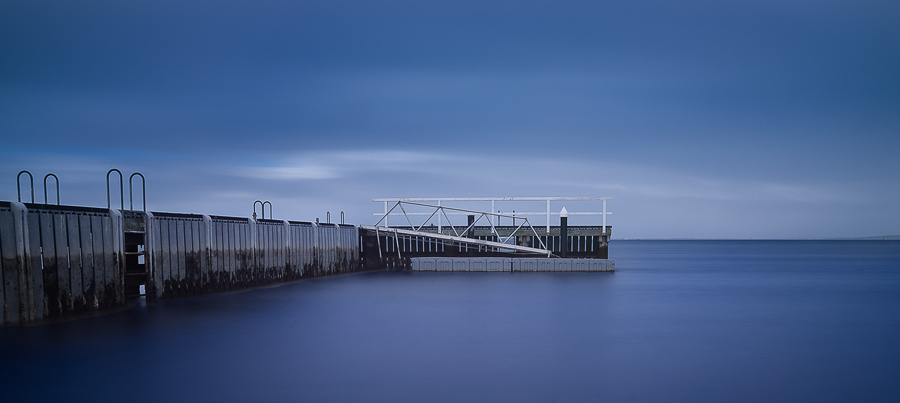Tomorrow I am heading off to Iceland, Greenland and a few other places. Keep a watch on my Flickr page and my Facebook page for updates.
I am really looking forward to meeting some more of the friendly locals in Iceland.

The face of Melbourne is changing. A lot of inner city pubs are closing, being left derelict or being torn down. These pubs often serviced a small, local community providing a place to socialise and drink. Some of Melbourne’s social history is being lost.
This is The Commercial Hotel, Whitehall Street, Yarraville.

In June last year I was fortunate enough to get a flight over Lake Eyre in South Australia. This is spectacular country and I was fascinated by the patterns and forms in the landscape from up in the air.
I wasn’t equipped for serious aerial photography, but I was able to take a number of shots that not only captured the vastness of the land, but also had an element of the abstract about them.
The image below is of the dog fence that runs for more than 5,600 kilometres through South Australia and Queensland.

For some time I have been experimenting with long exposures. I have discovered getting a good result is harder than it looks. All sorts of problems occur: camera shake if your tripod isn’t solid enough, colour casts from the reduction filter, lens issues if you stop the lens down past its optimal performance point, and lots of others, including uninteresting images.
Long exposures seem to be very unforgiving, getting the exposure right is important. This often means you are chasing the light as it fades. If you need to increase a 120-second exposure by one stop, it has to become a 240 second exposure; 4 minutes. In that time the light can fade more than one stop late in the afternoon. But I am learning, I think.

Iceland is a beautiful country with spectacular scenery and ever-changing light and weather. I have visited twice and am planning another trip later in 2013.
As well as the spectacular scenery, Iceland is also full of small, timber churches. These are often built on farms, in desolate locations and sometimes the spectacular scenery and churches combine.
One of my favourite places in Iceland is Budir on the Snaefellsnes Peninsula in Iceland’s west.

The front page gallery has been changed to showcase five images from the Venice trip.
I have just created a portfolio at 500px. I will be using this site to highlight collections of my favourite images.
First up, several images of farm buildings in Iceland. I never cease to be fascinated by the feeling of emptiness and sometimes desolation that these places and buildings create.
Like many photographers, I suffer from a tendency to GAS (Gear Acquisition Syndrome). For a while now I have been aware that the quality of my prints and skills as a printer haven’t been improving and fall well short of what is expected of a fine art print. First solution is more megapixels, right? So I upgraded my camera. This resulted in bigger prints but didn’t do much for my ability to print, so new printer, more software, more plugins, still looking for that magic bullet.
Then I happened upon the website of Melbourne-based landscape photographer Joshua Holko. Joshua has won many awards and regularly leads photograph trips to places such as Iceland, the arctic and Antarctic.
After an exchange of emails, we arranged a day for me to take advantage of Joshua’s mentoring program. And what an eye-opener that day was.
Starting with shooting technique we discussed the entire workflow needed to produce a gallery quality print. Joshua critiqued some prints I had brought with me, then spent several hours taking me through a Photoshop workflow that produced much better results than I would have imagined.
And to prove that more gear isn’t the answer, Joshua then produced a beautiful, detailed print from a file from my old camera, not the fancy new one.
Spend a little time to go through Joshua’s website and his list of achievements, this man knows what he is doing.
Before you give in to the symptoms of GAS, try learning how to use and get the most out of the equipment you already have, that might solve the problem.
“In those days a photographer ran his career upon the celebrities who came to him”
~ Mathew Brady, 1891
…there’s photography
Some years ago I saw some lovely images of smoke taken by Graham Jeffrey. Several times I have tried to do the same, but with limited success. The first problem I faced was not being able to get a true black background. This was quickly fixed by blocking the spill from the light so it didn’t fall on the background.
The other problems weren’t so easy to fix at the time, and included:
In recent years all of these issues have been fixed. I now have a new 22 MP camera with very good low light performance, several flash units with wireless triggers so I can place the light anywhere I want and a macro lens that will focus more than close enough to do the job.
I used a myrrh incense stick (it was Christmas after all) and set the light up so that it was behind the smoke to the left of the camera. A piece of cardboard blocked the light so it didn’t fall on the background and the flash was aimed so it wasn’t directly into the camera lens. The macro lens and the 22 MP meant I had plenty of leeway to crop closely to find the most interesting shapes in the smoke.
The Photofilter adjustment in Adobe Photoshop was used to add colour.

Some links in this post may be to our affiliates; sales through affiliate links benefit this site.